 Most viewed - KYOTO 京都府 Most viewed - KYOTO 京都府 |
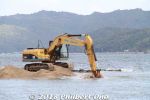
The sand spit gets shorter each hour.66 views
|
|
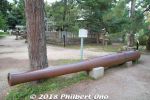
Would you believe a cannon on Amanohashidate?66 views
|
|
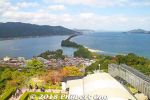
66 views
|
|
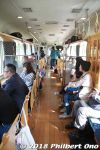
Aomatsu is special because the interior is wooden and it has a variety of seating (train fare is the same for all seats).66 viewsIt's a cafe train and you can order drinks (including alcohol) and light meals. No reservations required, and it's all non-reserved. Train fare is the same as regular trains.
|
|
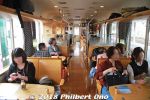
Cafe-type seats (wooden) with a table.66 views
|
|

Tenryuji65 views
|
|

65 views
|
|

500 Series shinkansen65 views
|
|

The pond as seen from the Phoenix Hall.65 views
|
|

65 views
|
|

65 views
|
|

Side view of the Shaka Nyorai.65 views
|
|

Each arhat has a name.65 views
|
|
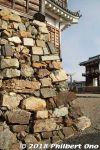
Fukuchiyama Castle is also noted for its stone walls using stones that were originally something else, like gravestones, stone lanterns, and even Buddha stone statues (転用石).65 viewsFukuchiyama, Kyoto Prefecture.
|
|
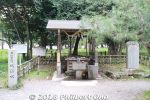
Near Amanohashidate Shrine is this well of pure spring water named "Iso-shimizu" (磯清水) famous since the Heian Period.65 views
|
|

About Buson, a famous poet.65 views
|
|
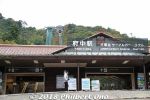
Fuchu Station is the Cable Car and Chair Lift station to go up to Kasamatsu Park on the northern end of Amanohashidate.65 views
|
|
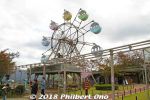
This small ferris wheel at Amanohashidate Viewland is visible to the naked eye from across the sandbar.65 views
|
|

Map of Amanohashidate Viewland amusement park.65 views
|
|
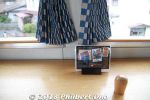
Counter seat with a knob to hold on to.65 views
|
|
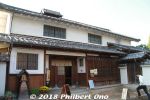
One home on the Chirimen Kaido Road the public can enter is the Former Bito Family Merchant's House (Kyu-Bitoke 旧尾藤家). The Bito family was a raw silk and chirimen wholesaler since the Edo Period. 65 viewsVery prominent and rich local family who also became active in local government and business during the Meiji Period.
http://www.yosano.or.jp/chirimen-kaido/?page_id=162
|
|

View from the two-story pagoda on the hillside. This would be a sea of red during the peak period. I have to come back here.64 views
|
|

Inside a sleeper train.64 views
|
|

Osaka Loop Line train64 views
|
|

64 views
|
|

64 views
|
|

Manpukuji (萬福寺) is a large temple complex and headquarters of a Chinese Zen sect (Obaku-shu). It's one of the Big Three Zen sects in Japan (besides Soto and Rinzai).64 viewsThe founder was Chinese Zen master Yinyuan Longqi (Ingen) from Fujien Province in China who came to Japan via Nagasaki in 1654. Manpukuji (or Mampukuji) is part of the Japan Heritage for Uji tea history. A short walk from Obaku Station on the JR Nara Line and Keihan Uji Line.
|
|

Very fine roof.64 views
|
|

石碑64 views
|
|

64 views
|
|

Corridor to Daiohoden Hall.64 views
|
|

In front of Daiohoden Hall.64 views
|
|

Shaka Nyorai or Gautama Buddha, founder of Buddhism. 釈迦如来座像64 views
|
|

64 views
|
|

64 views
|
|
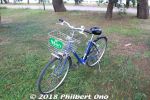
My rental bicycle. Rental bicycles also available at the entrance to the Amanohashidate sandbar.64 views
|
|
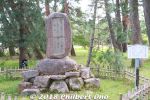
Monument for Emperor Showa's Amanohashidate poem he wrote when he visited this area in 1951.64 views
|
|

The cannon was never based or used on Amanohashidate. It was originally from the Battleship Kasuga. Donated by the Imperial Navy to the village in 1923 to promote the Imperial Navy.64 views
|
|
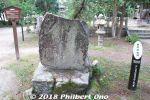
Poetry monument for Buson, a famous poet.64 views
|
|
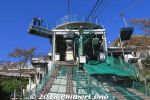
Arriving Kasamatsu Park on the chairlift.64 views
|
|

Cable car to Kasamatsu Park.64 views
|
|
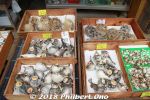
Puffer fish.64 views
|
|
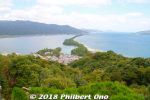
64 views
|
|
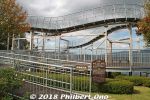
Amanohashidate Viewland has this elevated walkway to view Amanohashidate. Not good if you're afraid of heights.64 views
|
|
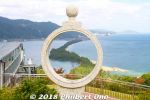
Another Circle of Wisdom at Amanohashidate Viewland.64 views
|
|
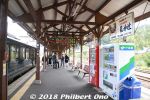
Amanohashidate Station64 views
|
|
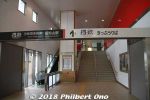
At Fukuchyama Station, the entrance to the Kyoto Tango Railway platform.64 views
|
|
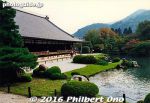
Tenryuji's Japanese garden.63 views
|
|

63 views
|
|

Miei-do Hall (Daiden)63 views
|
|

Hojo-ike Pond. Notice the two-story pagoda (Tahoto) in the distance.63 views
|
|

Opening in 2016, Kyoto Railway Museum is a modern makeover of the old Umekoji Steam Locomotive Museum that opened in 1972. Short bus ride from Kyoto Station.63 views
|
|

63 views
|
|

63 views
|
|

63 views
|
|

63 views
|
|

63 views
|
|

63 views
|
|

Old train tickets63 views
|
|

63 views
|
|

63 views
|
|

About Daiohoden Hall.63 views
|
|

Daiohoden Hall entrance.63 views
|
|

On my second visit to Manpukuji, I went with a group of foreigners and had lunch at the temple's restaurant Oryokaku (黄龍閣) serving Chinese-style shojin-ryori (religious vegetarian cuisine) called fucha-ryori (普茶料理).63 views
|
|

Rice was finally served at the end with pickles.63 views
|
|
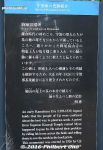
About Koma no Ashikage-en Monument. According to legend, local people in Uji pondered over how to sow the seeds to grow tea.63 viewsIt was then Priest Myoe (明恵), from the Kegon-shu Buddhist Sect, came on horseback and trotted on the field saying, "Plant the seeds in my horse's hoof prints." This monument was built by Uji tea growers in 1926 to express their appreciation to Myoe.
|
|

What to see from Amanohashidate Station. Best to rent a bicycle at the souvenir shop in front of the station.63 views
|
|
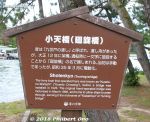
About the rotating bridge (Shotenkyo).63 views
|
|
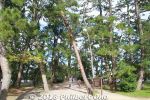
Entrance to Amanohashidate's path to the other end. Japanese pine trees all over on both sides of the road.63 views
|
|
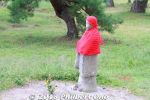
Jizo statue on Amanohashidate.63 views
|
|
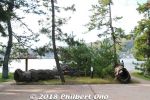
The Twin Dragon Pine Trees were broken. 双龍の松63 views
|
|
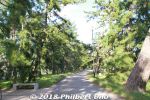
63 views
|
|
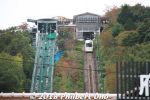
Cable Car and Chair Lift station to go up to Kasamatsu Park.63 views
|
|
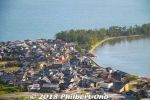
63 views
|
|
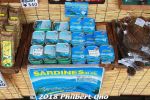
Amanohashidate sardines supposed to be good.63 views
|
|
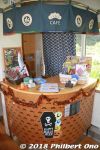
There's a staffed bar where you can order drinks and food.63 views
|
|
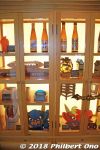
Wooden showcase.63 views
|
|
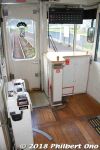
63 views
|
|

Miei-do Hall (Daiden)62 views
|
|

Turntable to direct the locomotives to the desired track and direction.62 views
|
|

Inside Nijo Station that was moved here. Now the museum gift shop.62 views
|
|

62 views
|
|

62 views
|
|

"Raicho" Tokkyu Limited Express, KUHA48962 views
|
|

62 views
|
|

Train kiosk from the good old days (1950s-60s).62 views
|
|

Reconstructed rural train station from the good old days (1950s-60s). Named "Showa-no-Eki Station."62 views
|
|

Daihatsu three-wheeler car62 views
|
|

Many artifacts on display on both the 1st and 2nd floors of t he Main Hall.62 views
|
|

62 views
|
|

The Sanmon main gate (Important Cultural Property). 三門(さんもん)62 views
|
|

The Sanmon main gate (exit side). 三門(さんもん)62 views
|
|

Chinese-style architecture is obvious with the roof corners curling upward.62 views
|
|

Manpukuji temple bell in a corridor.62 views
|
|

Inside the Tennoden Hall is Hotei, one of the Seven Gods of Good Fortune. 天王殿(てんのうでん)、弥勒菩薩(布袋)62 views
|
|

62 views
|
|

62 views
|
|

62 views
|
|

62 views
|
|

62 views
|
|

62 views
|
|

Plum blossoms.62 views
|
|

Inside Icho-an. We could immediately tell that it was Chinese since the food was served on a turntable (Lazy Susan) which you can see in the photo.62 views(This photo was taken after we finished lunch.)
|
|

Manpukuji also has a subtemple and treasure house called Hozoin (宝蔵院) noted for storing tens of thousands of woodblocks used for printing Buddhist scriptures.62 views
|
|

Entrance to Hozoin.62 views
|
|

Tetsugen Doko (1630-1682), one of Ingen's Japanese disciples, started the project to make these printing blocks still used today.62 views
|
|

Sample printings.62 views
|
|

Buddhist picture print too.62 views
|
|

Koma no Ashikage-en Monument in front of the entrance to Manpukuji temple. This can be roughly translated as "Hoof Print Field Monument." 駒蹄影園跡碑62 viewsThis monument is part of the Japan Heritage designation for Uji tea history.
|
|

Very unusual thatched roof home near Manpukuji.62 views
|
|
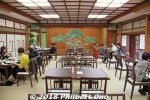
The 1st floor is the main dining room. It even has a Noh stage.62 views
|
|
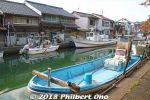
Yoshihara Inlet 62 views
|
|
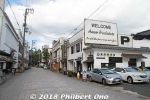
Near the entrance to Amanohashidate, this welcome sign with "One of the three famous beauty spots of Japan" has been here for decades.62 viewsAccording to Japanese Wikipedia, the "Nihon Sankei" (Japan's Scenic Trio) label originated in 1643 by Hayashi Gaho (aka Hayashi Shunsai), a Japanese Neo-Confucian scholar who wrote a book mentioning these three sights. The expression "Nihon Sankei" was later coined in 1689 by another Japanese Neo-Confucianist scholar, Kaibara Ekken in his travel diary. So "Nihon Sankei" goes way back to the 17th century.
It's really amazing that it has stuck throughout these centuries even with Mt. Fuji not included. With Japan having so many places of beauty, it would be nearly impossible today for anyone to unilaterally declare any three sights as the "Best Three."
To the question of why it's always the best "three," the answer seems to be more complicated. It seems the Japanese have had numerical favorites for many centuries. Many odd numbers are favorites including one, three, five, and seven. This might sound familiar when you think about haiku and tanka poetry syllables, and the 7-5-3 coming of age celebration for kids. But the number "three" for "Best Three" has also stuck for centuries and still today.
|
|

About swordsman Jutaro Iwami's testing stone.62 views
|
|
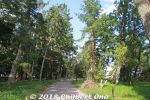
Path on Amanohashidate going north. Almost endless forest of pine trees. Very pleasant cycling ride or walk.62 views
|
|
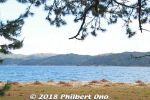
The ocean and beach.62 views
|
|
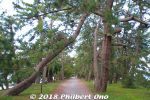
A few pine trees died or were knocked down.62 views
|
|
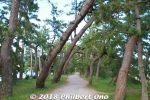
Wind-blown pine trees.62 views
|
|
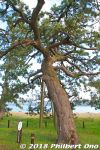
Pine tree for the sawn maiden's clothes. 羽衣の松62 views
|
|
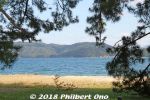
62 views
|
|
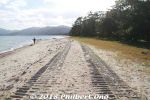
62 views
|
|
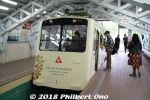
Cable car if you're afraid of heights.62 views
|
|
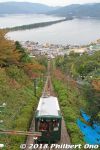
Cable car to Kasamatsu Park.62 views
|
|
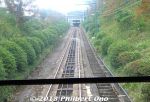
Cable car to Kasamatsu Park.62 views
|
|
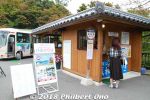
Bus stop to Nariaiji temple further up the hill, one of the 33 Saigoku Kannon Pilgrimage Temples.62 views
|
|
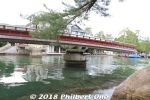
After bicycling across Amanohashidate back to the southern end, the rotating bridge again making room for a ship.62 views
|
|

On the southern end here, Amanohashidate upside down looks like a flying dragon (hiryu 飛竜). 62 views
|
|
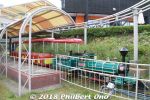
Besides having lookout decks, Amanohashidate Viewland is a small amusement park for kids.62 views
|
|

About the Circle of Wisdom.62 views
|
|
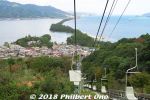
Chiarlift down from Amanohashidate Viewland.62 views
|
|
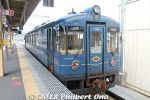
The Aomatsu train runs once every morning (10:17 am) and afternoon (3:17 pm) from Fukuchiyama Station to Amanohashidate Station and requires no reservations or extra train fare.62 views
|
|
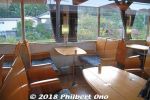
Cafe-type seats (wooden) with a table.62 views
|
|
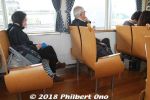
Toward the front of the train are regular seats.62 views
|
|
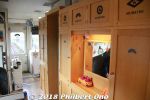
62 views
|
|
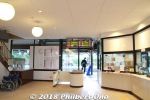
Inside Amanohashidate Station. Nice station with luggage lockers and English-speaking tourist information desk.62 views
|
|
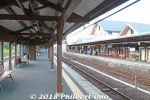
Amanohashidate Station plaform.62 views
|
|

61 views
|
|

61 views
|
|

80 series EMU car KuHa 8600161 views
|
|

61 views
|
|

Empty hangar for a steam locomotive.61 views
|
|

Inside the rear of the round house.61 views
|
|

This real steam locomotive offers rides a few times a day.61 views
|
|

61 views
|
|

Nijo Station reconstructed here.61 views
|
|

Back to the Promenade area near the entrance with the 0 Series shinkansen.61 views
|
|

The classic and iconic "Bullet Train."61 views
|
|

61 views
|
|

Sleeper train61 views
|
|

61 views
|
|

61 views
|
|

61 views
|
|

61 views
|
|

A gate being renovated.61 views
|
|

Sanmon main gate. 三門(さんもん)61 views
|
|

61 views
|
|

Before going to Tennoden Hall, we turned left to this small gate leading to Kaizan-do Hall.61 views
|
|

Manpukuji corridor lanterns.61 views
|
|

Tennoden Hall (Important Cultural Property). 天王殿(てんのうでん)61 views
|
|

61 views
|
|

61 views
|
|

Daiohoden Hall (Important Cultural Property), Manpukuji's main temple. 大雄寶殿(だうおうほうでん)61 views
|
|

Chinese-style incense burner.61 views
|
|

Behind the Daiohoden Hall is Hatto Hall (Important Cultural Property) where Buddhist lectures are held. 法堂(はっとう)61 views
|
|

About Hatto Hall. 61 views
|
|

Manpukuji's famous wooden fish board used like a gong to indicate the time. 魚梆61 views
|
|

Prayer tablets (ema)61 views
|
|

"Obaku-san Fucha Ryori" bento-type (box lunch) fucha ryori for our large tour group. It costs around ¥3,000.61 views
|
|

Near the Sanmon Gate is this entrance to Icho-an restaurant. 銀杏庵61 views
|
|

Chotaro Horii is the 6th-generation owner/operator of Horii Shichimeien which was originally Okunoyama Chaen (奥ノ山茶園), one of Uji's Seven Reknown Tea Fields (七名園).61 views
|
|
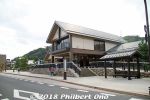
Amanohashidate Station (Kyoto Tango Railway, nicknamed "Tantetsu" or "Willer Trains") is close to Amanohashidate sandbar. Trains from JR Osaka, Kyoto, and Fukuchiyama Stations stop here.61 views
|
|
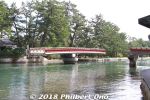
On the southern end, this bridge to Amanohashidate rotates quite often to allow boats to pass. 61 views
|
|
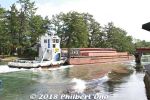
Most of the boats carry freight.61 views
|
|

Sightseeing map of Amanohashidate.61 views
|
|

How Amanohashidate sandbar formed. Sand from the east coast of Tango Peninsula carried by ocean currents were repeled by the river current of the Noda River. The sand thereby accumulated from the northern end to enclose the bay.61 viewsUnderwater, Amanohashidate looks like a sand wall.
|
|
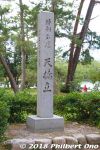
Amanohashidate marker.61 views
|
|
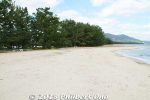
Beach on the east side of Amanohashidate.61 views
|
|
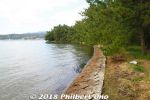
West side of Amanohashidate with no beaches.61 views
|
|
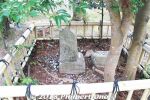
Swordsman Jutaro Iwami's testing stone.61 views
|
|
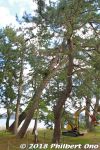
Many pine trees have names.61 views
|
|
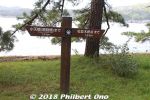
Good to know how far away you are.61 views
|
|
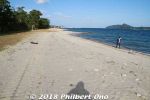
Sunny beach on Amanohashidate.61 views
|
|
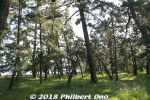
61 views
|
|
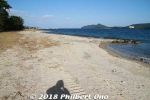
61 views
|
|
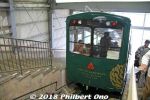
Arriving Kasamatsu Park on cable car.61 views
|
|
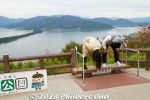
Look at Amanohashidate upside down.61 views
|
|
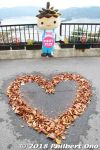
Autumn heart at Amanohashidate.61 views
|
|
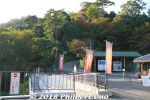
61 views
|
|
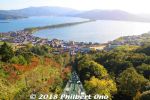
61 views
|
|

Old postbox and a message.61 views
|
|
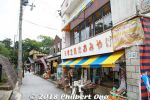
Path to nearby Moto-Ise Kono Shrine is lined with souvenir shops.61 views
|
|
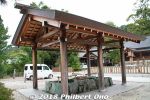
Purify yourself here.61 views
|
|
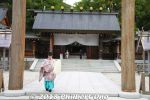
61 views
|
|
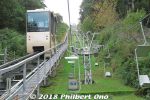
Chair lift and monorail car for Amanohashidate Viewland. Taking the chair lift is faster than the monorail car.61 views
|
|
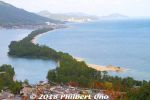
On the lower right of the sandbar, notice the finger of sand extending into the ocean. 61 viewsThis finger keeps growing as the northern sand erodes and drifts over to it. So every few years, they have to remove the excess sand. (Notice the power shovel and dump truck working on it.) Otherwise, this little sand spit will become another sandbar across the ocean, impeding local shipping.
|
|
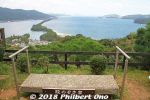
Platform to view the sandbar upside down. 61 views
|
|
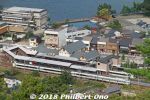
Amanohashidate Station as seen from Amanohashidate Viewland.61 views
|
|
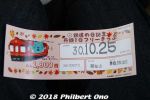
This Kyoto Tango Railways one-day train pass is a good deal.61 views
|
|
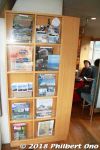
Enter the Aomatsu train and see this rack of tourist pamphlets.61 views
|
|
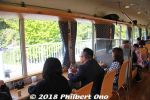
Window seats at the counter.61 views
|
|
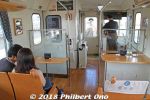
Front of the Aomatsu train.61 viewsThe Aomatsu train runs only twice a day from Fukuchiyama to Amanohashidate taking about an hour. Love this train.
https://trains.willer.co.jp/matsu/aomatsu.html
|
|

Courtyard garden60 views
|
|

Hojo-ike Pond. The two-story pagoda (Tahoto) in the distance.60 views
|
|

The two-story pagoda (Tahoto) is a short climb up the stairs. Worth the view.60 views
|
|

60 views
|
|

Gasen-do Hall60 views
|
|

60 views
|
|

60 views
|
|

60 views
|
|

I was a few days too late to see the peak. Will return again in autumn.60 views
|
|

First-generation 0 Series shinkansen.60 views
|
|

60 views
|
|

The museum's main highlight is the Umekoji steam locomotives on a roundabout or roundhouse next to a turntable.60 views
|
|

This is probably the most steam locomotives you'll ever see in Japan. Some or most of them still run.60 views
|
|

60 views
|
|

60 views
|
|

60 views
|
|

60 views
|
|

60 views
|
|

60 views
|
|

60 views
|
|

80 series EMU car KuHa 86001 60 views
|
|

Sleeper train dining car60 views
|
|

Inside Osaka Loop Line train60 views
|
|

Main Hall60 views
|
|

60 views
|
|

JNR for Japan National Railways60 views
|
|

Kiosk owner's space.60 views
|
|

60 views
|
|

Train schedules60 views
|
|

Train diorama60 views
|
|

60 views
|
|

At the Sanmon Gate, pay the admission to enter the temple. It's a very interesting temple, but they don't really have English explanations.60 views
|
|

From Sanmon Gate, path to Tennoden Hall. The path is modeled after dragon scales.60 views
|
|

Karahafu roof gable60 views
|
|

60 views
|
|

60 views
|
|

60 views
|
|

Daiohoden Hall roof.60 views
|
|

Round window at Daiohoden Hall.60 views
|
|

Daiohoden Hall also has statues of the Eighteen Arhats. 十八羅漢像60 viewsThey are the original followers of the Buddha who have reached the state of Nirvana and are free of worldly desires.
|
|

60 views
|
|

60 views
|
|

伽藍堂60 views
|
|

About the Bell Tower60 views
|
|

Fucha ryori became very popular after it was first introduced in Japan. No wonder. It looks exotic and tastes absolutely delicious. Salad.60 views
|
|

60 views
|
|

60 views
|
|

60 views
|
|

60 views
|
|

In 1738, Nagatani Soen basically invented sencha green tea by using a kneading process for young tea leaves. He used a hot drying plate called hoiro to knead the steamed tea buds by hand to dry them. The process is called aosei sencha seiho. 60 views
|
|

Tofukuji Temple, Kyoto60 views
|
|
| 2715 files on 11 page(s) |
 |
 |
7 |  |
 |
|